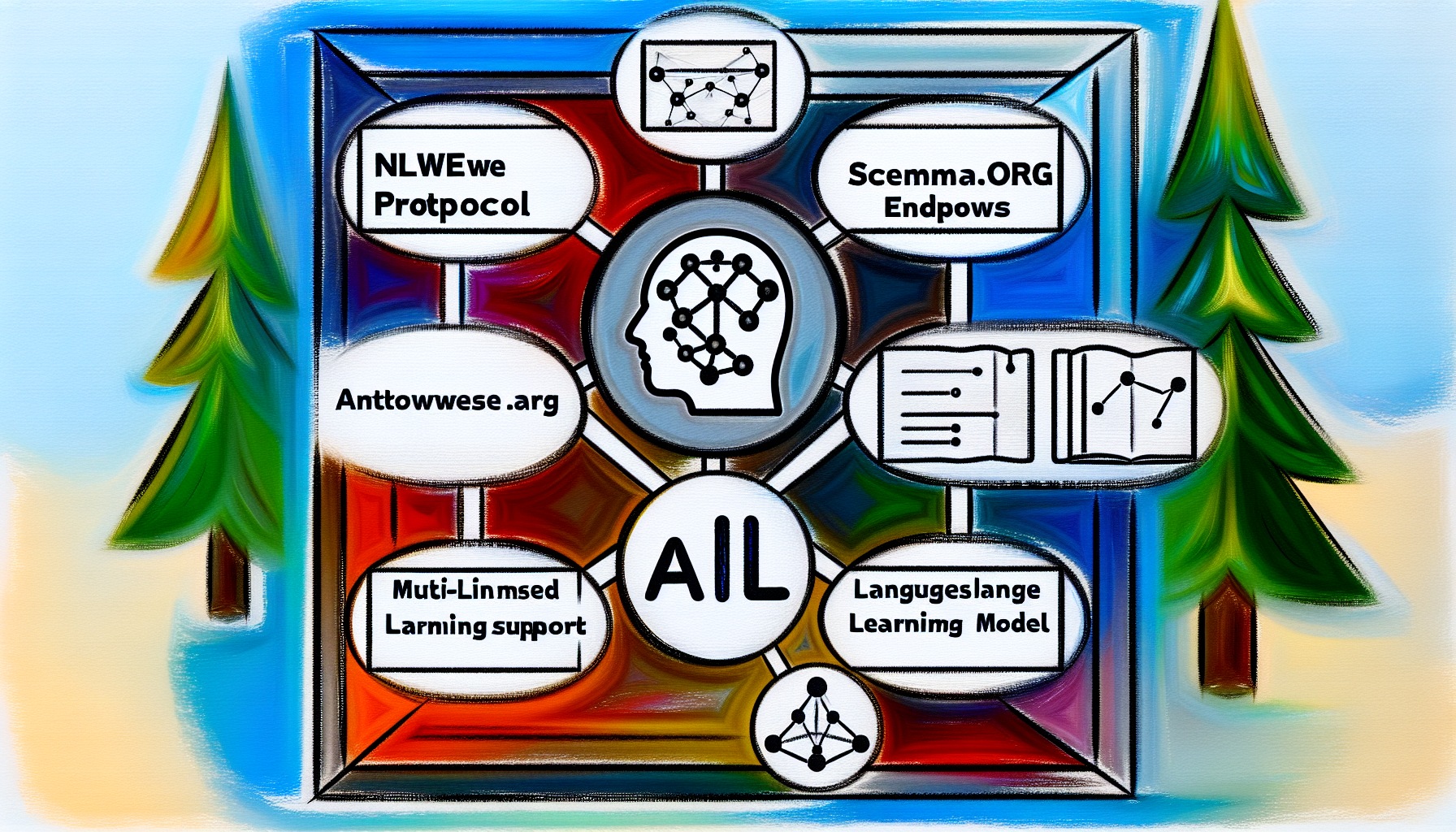As the UI_UI team hosts an AMA on “Turning Any Website into Your AI Agent,” the NLWeb agent is the concrete blueprint behind that promise. Microsoft unveiled NLWeb on May 21, 2025, enabling any website to function as both a conversational AI application and a Model Context Protocol server that exposes site capabilities to agents. [1] Microsoft’s CTO Kevin Scott frames NLWeb and MCP as open standards that will decentralize search by letting agents query sites directly and reduce indiscriminate scraping. [2]
Key Takeaways
– shows NLWeb launched on May 21, 2025, combining three standards—Schema.org, RSS, MCP—to make any site a conversational MCP server. – reveals cross-model flexibility, supporting two LLM ecosystems (OpenAI and Anthropic) with optional PostgreSQL backing for real-time, data-grounded answers. – demonstrates practical endpoints like /ask and JSON responses, plus AutoRAG vector indexing, reported after an August 2025 Microsoft–Cloudflare partnership. – indicates open, tech-agnostic design under an MIT license, with reference implementations and UI widgets shipping for e-commerce and publishing examples. – suggests a shift from search to answer engines, decentralizing queries and reducing scraping, while raising attribution risks highlighted in July 2025 interviews.
Inside Microsoft’s NLWeb agent and its May 2025 launch
Microsoft’s May 21, 2025 announcement made a bold claim: with NLWeb, any website can become an AI-native app that agents can discover, query, and transact with in natural language. By design, a site that adopts NLWeb exposes its tools via the Model Context Protocol (MCP), enabling real-time agent interactions without proprietary gateways. The result is a dramatically lower barrier for “agentifying” content, catalogs, and services. [1]
Under the hood, the pattern leans on three widely understood ingredients—Schema.org markup to describe entities and actions, RSS for updates/discovery, and an MCP server that surfaces capabilities in a machine-actionable way. NLWeb supports major model families (OpenAI and Anthropic) and offers optional PostgreSQL integration to ground answers in a site’s live, transactional data. [1] Markup-driven routing, plus a standard capability interface, is what allows agents to move beyond scraping toward structured querying. [1]
Early coverage cast the effort as “HTML for the agentic web,” emphasizing that it’s open-source and technology-agnostic to avoid vendor lock-in. The framing, attributed to RV Guha’s vision, stresses that NLWeb isn’t just Q&A—it aims to enable autonomous transactions, with sites explicitly publishing what actions agents can take. That opportunity arrives with familiar risks for publishers as traffic patterns shift. [4]
Technical write-ups add texture: NLWeb’s responses follow a documented JSON format; Microsoft ships reference implementations and UI widgets that simplify common “list-style” experiences such as product or article listings. The project’s permissive MIT license is meant to speed adoption across e-commerce, media, and developer examples. [5]
How the NLWeb agent routes natural language into tools
At the interface layer, NLWeb popularizes a canonical /ask endpoint that accepts plain-English prompts and returns structured results, so a site can be queried directly like an app. This endpoint is central to exposing on-site search, filters, and actions as conversational capabilities instead of static pages. [3] Response payloads are JSON with typed fields, which makes the outputs predictable for agents and UI renderers alike. [5]
Because the site itself is an MCP server, agents can enumerate and invoke tools (e.g., search, add-to-cart, subscribe) the site chooses to publish, with guardrails implemented at the server boundary. That structure provides real-time answers from first-party sources rather than cached embeddings alone. [1] For retrieval, Microsoft and Cloudflare spotlight AutoRAG for vector indexing so content stays fresh, navigable, and grounded in a site’s latest updates. [3]
The stack is intentionally modular. Operators can wire NLWeb to PostgreSQL for authoritative, low-latency data, then choose the model family best suited to their workload—OpenAI or Anthropic—so the language layer is pluggable. Reference UI components cover common list and card layouts, shortening time-to-first-agent for content and commerce sites. [1] The design goal: shrink implementation from a bespoke integration project into a playbook site owners can repeat. [5]
NLWeb agent economics: decentralizing search and attribution
Kevin Scott argues that NLWeb and MCP open a path to the “agentic web,” where intelligent agents query websites directly, shifting power away from a handful of web-scale intermediaries toward open protocols. In his view, better-defined interfaces will reduce indiscriminate scraping while preserving content provenance and creating room for new business models based on sanctioned, metered access. [2] That’s a stark pivot from the crawler era, where attribution and monetization remain contested. [2]
Windows Central frames the change as a move from search engines to answer engines, driven by NLWeb’s /ask endpoints and Cloudflare’s AutoRAG for vectorized retrieval. In this model, an agent doesn’t return blue links; it orchestrates a conversation, calls site tools, and composes a task-complete answer—raising both upside for well-instrumented sites and concerns for smaller creators who rely on referral traffic. [3] The practical deployment notes point to an implementation timeline measured in sprints, not quarters. [3]
Business reporting highlights two sides of the ledger. On the positive side: open-source, technology-agnostic design, multi-LLM and vector DB support, and the possibility of autonomous transactions that are explicitly authorized by the site. On the cautionary side: publisher risk if traffic bypasses pages for direct tool calls, demanding new attribution and compensation patterns to keep the ecosystem healthy. [4]
Practical deployment playbook for an NLWeb agent
Start with content discovery and structure. Add Schema.org markup to your core entities and actions, then ensure RSS feeds provide timely update signals for indexing and agent discovery. Treat your feeds as the heartbeat of “what’s new,” and your schema as the contract for “what’s possible.” Those two steps dramatically improve a model’s ability to route questions to the right tool. [1]
Next, expose capabilities. Run an MCP server alongside your site to publish allowed actions, then implement a public /ask endpoint that
Image generated by DALL-E 3









Leave a Reply